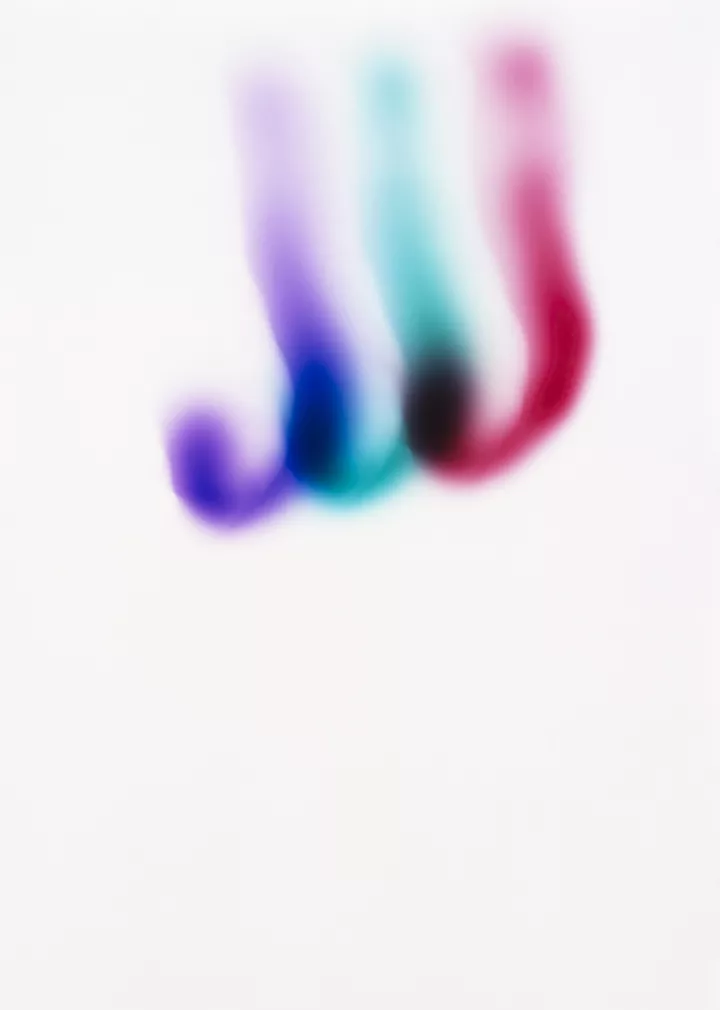
(English version below)
Die Ausstellung sliced time von Stefanie Seufert
Fotos zeigen, was man sieht. Möchte man glauben. Fotos sind auch selber Medien von Sichtbarkeit. Das Papier und der Film, die Chemie und die Zeit, der Apparat und das Licht, das Licht auch ohne Apparat, die Entwicklung, das Dunkel, die Manipulation… all das fließt mit im fotografischen Bildersehen. Dieses Spektrum beschreibt zugleich das Instrumentarium, mit dem Stefanie Seuferts Fotografie umgeht. Ihre Bilder sind gebaut aus Mitteln der analogen Fotografie. Darüber bahnen sie sich ihren Weg zu den Dingen: zu Texten, zu Architektur, zu Licht als Markierung von Zeit, die vergeht. Was man auf ihren Fotos sieht, verdankt sich dem persönlich gefärbten, dem freien und erfinderischen Umgang mit diesen Mitteln. Das lässt Dinge neu und neue Dinge sehen. Fotografie ist dann Verwandlung und auch Anverwandlung, ihre Perspektivität stellt Wirklichkeiten her.
Die Serie sich selber zu sehen, M. D., Seite 102, No. 1–4 (2021) ist eine fotografische Re-Lektüre. Seufert fotografiert (viermal) eine Seite aus Marguerite Duras’ Text Die Fotografien. Die ist mit Papierstreifen so abgedeckt, dass bloß Satzfragmente lesbar sind; thematisch kreisen sie um Fotografie und Sichtbarkeit (des Selbst). Bei Farbbelichtung der Negative fügt Seufert mit der Taschenlampe gestisch Lichtzeichnungen ein, im Abzug erscheinen sie als violette Kurven. Lichtkegel als Bedingung des Schauens und als Metapher des Selbst. Im gleichen Verfahren entsteht ein fotografischer Kommentar zu Legacy Russells Glitch Feminism, Wörter wie „invisible“, „unreadable“, „hypervisible“ sind dort ins Sichtbare gehoben, durch Lichtzeichnung kommentiert. Ganz praktisch haben solche Fotogrammzeichnungen mit Imagination, mit Tasten im Dunkel und mit Gespür für Empfindlichkeit zu tun. Fotopapier ist sensibel, und die aufs Foto imaginierten fotogrammatischen Gesten, im Dunkeln quasi blind ausgeführt, müssen knapp bemessen sein und sitzen. Nur ein kurzer Licht-Blick also, und er schreibt sich ein. Die Serie Inflatable, figure No. 1–9 (2017) basiert auf kameraloser Fotografie, die das Kameraprinzip imitiert. Die Versuchsanordnung: Das Negativ wird durch ein kreisrundes Loch, ausgestanzt mit einem simplen Bürolocher, belichtet. Das geschieht acht Mal pro Bild, acht Elemente also, und das Negativ liegt gekippt, sodass der Lichtkreis als Oval erscheint. Die Anordnung sieht drei je Bildrand vor, eine gleichmäßig serielle Verteilung. Die Negative sind sehr lichtempfindlich, und so führt Seufert den Vorgang ein ums andere Mal im Dunklen aus. Immer auf die richtige Platzierung tippend, kein Belichtungsschritt lässt sich zurücknehmen. In der Umsetzung als Serie bringt eine solche Komposition per Vorstellungskraft und Tastsinn recht unterschiedliche Figuren hervor – und ließe sich auch als Metapher des Fotografischen selbst lesen. Die neunteilige Arbeit wird zum ersten Mal komplett in der Laura Mars Gallery präsentiert.
Press release
Photographs show what one sees. One would like to believe. Photographs themselves are also media of visibility. Paper and film, chemistry and time, an apparatus and light, light as well without an apparatus; development, darkness, manipulation ... all this enters into the photographic 'perception' of images. This spectrum also represents the tools Stefanie Seufert employs in her photography. To produce her images, she applies the means of analog photography. Via these, her photos 'find their way' to phenomena: to texts, architecture, and light as a marker of time that passes. What one sees in Seufert's photographs is a result of her individual, free, and inventive use of these means. Thus, things can be seen anew, and new things can be seen. Photography, then, is transformation as well as incorporation; its perspectivity creates realities.
The series sich selber zu sehen, M. D., Seite 102, No. 1–4 (2021) is a photographic rereading. Seufert has photographed (four times) a page from Marguerite Duras’ text Die Fotografien. The page is covered with paper strips in such a way that only fragments of sentences are legible; thematically, they revolve around photography and visibility (of the self). During color exposures of the negatives, Seufert, by using a flashlight, gesturally inserts light drawings; in the prints they appear as violet curves. Light cones as a condition of seeing and as a metaphor of the self. In the same process, a photographic commentary on Legacy Russell's Glitch Feminism emerges; in it, words such as "invisible," "unreadable," "hypervisible" are brought into view, commented on by light drawing. In purely practical terms, such photogram drawings come down to imagination, groping in the dark, and a sense of sensitivity. Photographic paper is sensitive, and the photogramatic gestures imagined onto the photo, executed, as it were, blindly in the dark, must be tightly measured and accurate. In other words: just a momentary "bright spot" ‒ which leaves its mark. The series Inflatable, figure No. 1–9 (2017) is based on camera-less photography that imitates the camera principle. The experimental setup: The negative is exposed through a circular hole cut out with a simple office punch. This is done eight times per image, which means there are eight elements; and the negative is tilted so that the light circles appear as ovals. The layout allows for three of them per image margin, an even serial arrangement. The negatives are very light sensitive; that's why time and again Seufert carries out the process in the dark. Always guessing the right placement; no step of the exposure process can be taken back. When realized as a series, such a composition by imagination and sense of touch produces different shapes – and could also be read as a metaphor of the photographic itself. At the Laura Mars Gallery, the nine-part work is for the first time presented in its entirety.